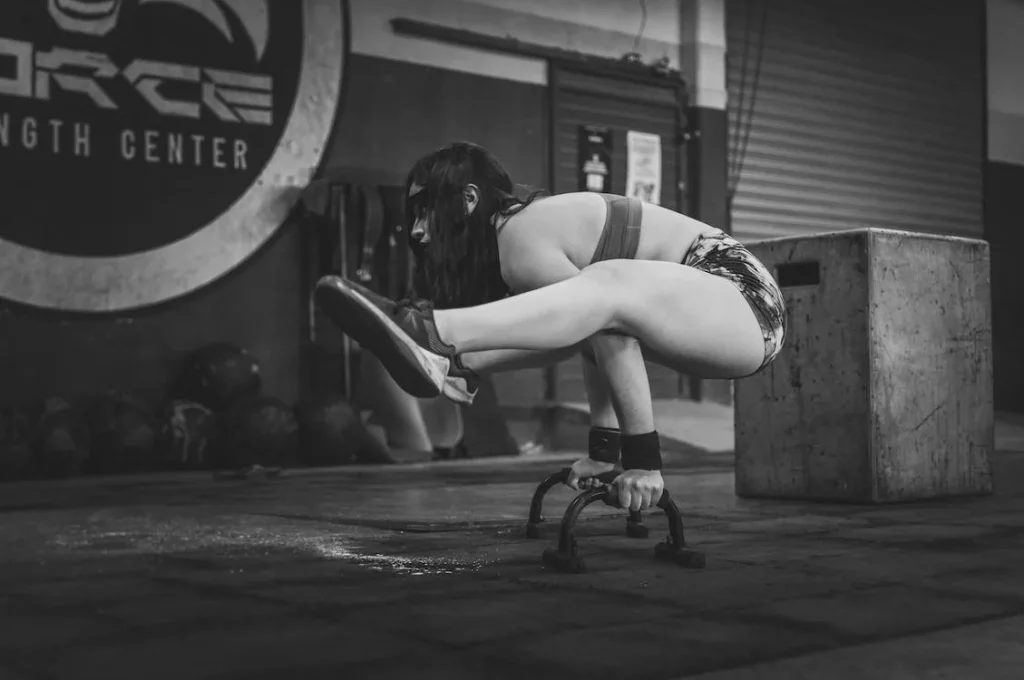How to Do CrossFit Workouts


How to Do CrossFit Workouts


Introduction
CrossFit is a dynamic and intense fitness program that incorporates a wide range of functional movements and exercises to improve overall fitness and athletic performance. It combines elements of weightlifting, cardio, gymnastics, and more to create a challenging and rewarding workout experience. Whether you’re new to CrossFit or looking to enhance your workouts, this comprehensive guide will provide you with the knowledge and techniques to excel in your CrossFit journey.
Step 1: Warm Up Properly
Before diving into a CrossFit workout, it’s essential to warm up your body to prepare for the intensity ahead. A proper warm-up routine helps increase blood flow, raise body temperature, and improve joint mobility. It also reduces the risk of injuries during your workout.
Start with a few minutes of light cardiovascular exercise, such as jogging, cycling, or jumping rope, to get your heart rate up. This helps activate your muscles and increases circulation. Then, incorporate dynamic stretches that target the major muscle groups involved in the upcoming workout. Perform exercises like leg swings, arm circles, walking lunges, and trunk rotations to improve flexibility and range of motion.
Tips:
Gradually increase the intensity of your warm-up to match the intensity of the workout.
Focus on movements that mimic the exercises you’ll be performing during the workout.
Pay attention to any specific areas of your body that feel tight or need extra attention and incorporate targeted stretches.
Step 2: Learn Proper Technique
Learning and mastering proper technique for each exercise is crucial in CrossFit to ensure safety and maximize the effectiveness of your workouts. If you’re new to CrossFit, consider working with a qualified coach or trainer who can teach you the correct form and provide feedback on your movements.
Start by focusing on fundamental movements such as squats, deadlifts, overhead presses, pull-ups, and kettlebell swings. Practice these exercises with an emphasis on maintaining proper posture, engaging the appropriate muscle groups, and moving through a full range of motion. Pay attention to details like maintaining a neutral spine, keeping your core tight, and using proper breathing techniques.
Tips:
Start with lighter weights or modifications of the exercises until you feel comfortable and confident with the movement patterns.
Record yourself performing the exercises or have a training partner provide feedback on your technique to help you make adjustments and improve.
Step 3: Scale and Modify as Needed
CrossFit workouts can be highly challenging, but they are designed to be scalable to accommodate individuals of different fitness levels and abilities. It’s important to listen to your body and scale or modify the workouts as needed to ensure you maintain proper form and avoid injury.
Scaling involves adjusting the workout by reducing the weight, repetitions, or difficulty level of the exercises. This allows you to maintain intensity and challenge yourself at an appropriate level. Focus on performing each movement correctly before increasing the difficulty.
Tips:
Work within your current fitness level and gradually increase the intensity as you progress.
Communicate with your coach or trainer about any limitations or concerns you may have, and ask for modifications or alternatives to exercises that you find too challenging.
Step 4: Follow a Structured Program
To get the most out of your CrossFit workouts, it’s beneficial to follow a structured program that includes a variety of exercises and targets different muscle groups. This helps prevent overuse injuries, ensures balanced development, and promotes overall fitness.
Include a mix of strength training exercises, cardiovascular workouts, and gymnastics movements in your program. Vary the exercises and intensity throughout the week to challenge different energy systems and muscle groups. This approach promotes well-rounded fitness and prevents plateauing.
Tips:
Consult with a CrossFit coach or trainer to help you design a program tailored to your goals, abilities, and any specific areas you want to focus on.
Incorporate rest days into your program to allow your body to recover and adapt to the training stimulus.
Step 5: Prioritize Safety and Recovery
Safety should always be a top priority in CrossFit. Pay attention to your body and listen to any signs of pain or discomfort. Push yourself, but know your limits and stop any exercise if you experience sharp pain or excessive fatigue. If necessary, seek guidance from a healthcare professional.
Allow for proper recovery between workouts. CrossFit workouts can be intense and put stress on your muscles and joints. Make sure to get sufficient rest, sleep, and nutrition to support your body’s repair and growth. Adequate recovery helps prevent overtraining and reduces the risk of injuries.
Tips:
Focus on proper nutrition to fuel your workouts and aid in recovery. Consume a balanced diet with sufficient protein, carbohydrates, and healthy fats.
Incorporate mobility exercises and stretching into your routine to improve flexibility, prevent muscle imbalances, and enhance recovery.
Step 6: Set Goals and Track Progress
Setting specific goals and tracking your progress is essential for staying motivated and continually improving in CrossFit. Identify areas of weakness or skills you want to develop, such as increasing strength, improving endurance, or mastering specific movements.
Set both short-term and long-term goals to provide direction and motivation. Keep a record of your workouts, weights lifted, repetitions completed, and times taken to monitor your progress. This helps you stay accountable and provides a visual representation of your achievements. Celebrate milestones along the way to maintain enthusiasm and keep pushing forward.
Tips:
Periodically reassess your goals and adjust them as needed to reflect your changing abilities and aspirations.
Consider participating in CrossFit competitions or challenges to test your skills, push your limits, and take your training to the next level.
Conclusion
CrossFit workouts offer a dynamic and challenging fitness experience that can transform your overall fitness and athletic performance. By following these steps and incorporating proper warm-up routines, learning and mastering technique, scaling exercises as needed, following a structured program, prioritizing safety and recovery, setting goals, and tracking progress, you can effectively and safely engage in CrossFit workouts. Remember to listen to your body, progress at your own pace, and prioritize proper form and technique. With consistency, dedication, and a focus on continuous improvement, you can achieve your fitness goals and enjoy the numerous benefits of CrossFit training.








